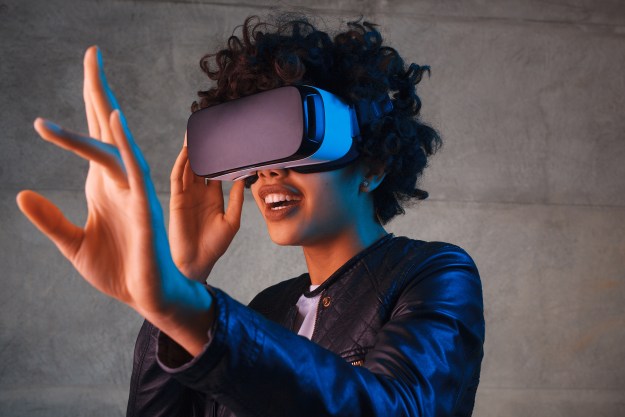Google plans to introduce a 4.3-inch display with an 18-megapixel resolution during the Society for Information Display’s (SID) conference, dubbed Display Week, in late May. The screen will likely be manufactured by South Korea’s LG Display and target virtual reality headsets, delivering a wide field-of-view and a pixel-per-inch ratio of 1,443 pixels using OLED display technology.
“White OLED with color filter structure was used for high-density pixelization, and an n-type LTPS backplane was chosen for higher electron mobility compared to mobile phone displays,” says a listing for the display’s presentation in May. “A custom high bandwidth driver IC was fabricated. Foveated driving logic for VR and AR applications was implemented.”
As a reference, the upcoming HTC Vive Pro and the current Samsung Odyssey headsets rely on two 3.5-inch AMOLED screens with a 1,440 x 1,600 resolution each supporting a 90Hz refresh rate. Meanwhile, the current Oculus Rift and HTC Vive VR headsets rely on two AMOLED displays measuring 3.54 inches each that pack a lower 1,080 x 1,200 resolution.
The presentation in May, listed as “18 Mpixel 4.3-in. 1443-ppi 120-Hz OLED Display for Wide-Field-of-View High-Acuity Head-Mounted Displays,” reveals that the LG-manufactured screen will support a 120Hz refresh rate, higher than the vomit-preventing 90Hz required for virtual reality. Anything lower than 90Hz, or rather 90 frames per second, can produce an experience that may cause nausea due to motion sickness stemming from a “skipping” environment.
But what is the resolution of a single 18-megapixel screen? With a 16:9 aspect ratio, that could equal to around 5,657 x 3,182. That is per eye as well and would require a PC with extremely high-powered components to render visuals at 3182p on each screen at 90Hz or more. To help alleviate some of the work, the experience would need to rely on eye-tracking and a method called foveated rendering, according to Google Vice President of AR/VR Clay Bavor.
The idea with foveated rendering is to monitor the user’s focal point with eye-tracking hardware. Everything existing outside the wearer’s peripheral vision – scenery not picked up by the eye’s fovea centralis – isn’t fully rendered by the PC. Google revealed that it is currently working on foveated rendering in December, leading to speculation that Google may be working on its own high-definition virtual reality headset.
Google’s presentation at Display Week won’t be a big reveal in a keynote, but instead during a session on May 22 presented by Google hardware engineer Carlin Vieri. Also listed for the session is Grace Lee and Nikhil Balram from Google, and Sang Jung, Joon Yang, Soo Yoon, and In Kang from LG Display. It follows Bavor’s keynote during Display Week in 2017 where he revealed Google’s “secret project.”
At the time, Bavor said Google wanted more pixels in VR and teamed up with “one of the leading OLED manufacturers” to create a VR-capable OLED display. It would have ten times more pixels than VR-focused screens currently available on the market. It would also deliver 20 megapixels per eye, aka the number of pixels comprising two and a half 4K TVs, he said.
Editors' Recommendations
- Apple’s secret VR headset just leaked an ingenious idea
- Here’s why Apple’s VR headset may become an ‘expensive flop’
- Watch Meta demonstrate full-body VR tracking with just a Quest headset
- Meta wants its next VR headset to replace your laptop
- HTC’s leaked Vive Flow headset might offer portable VR

